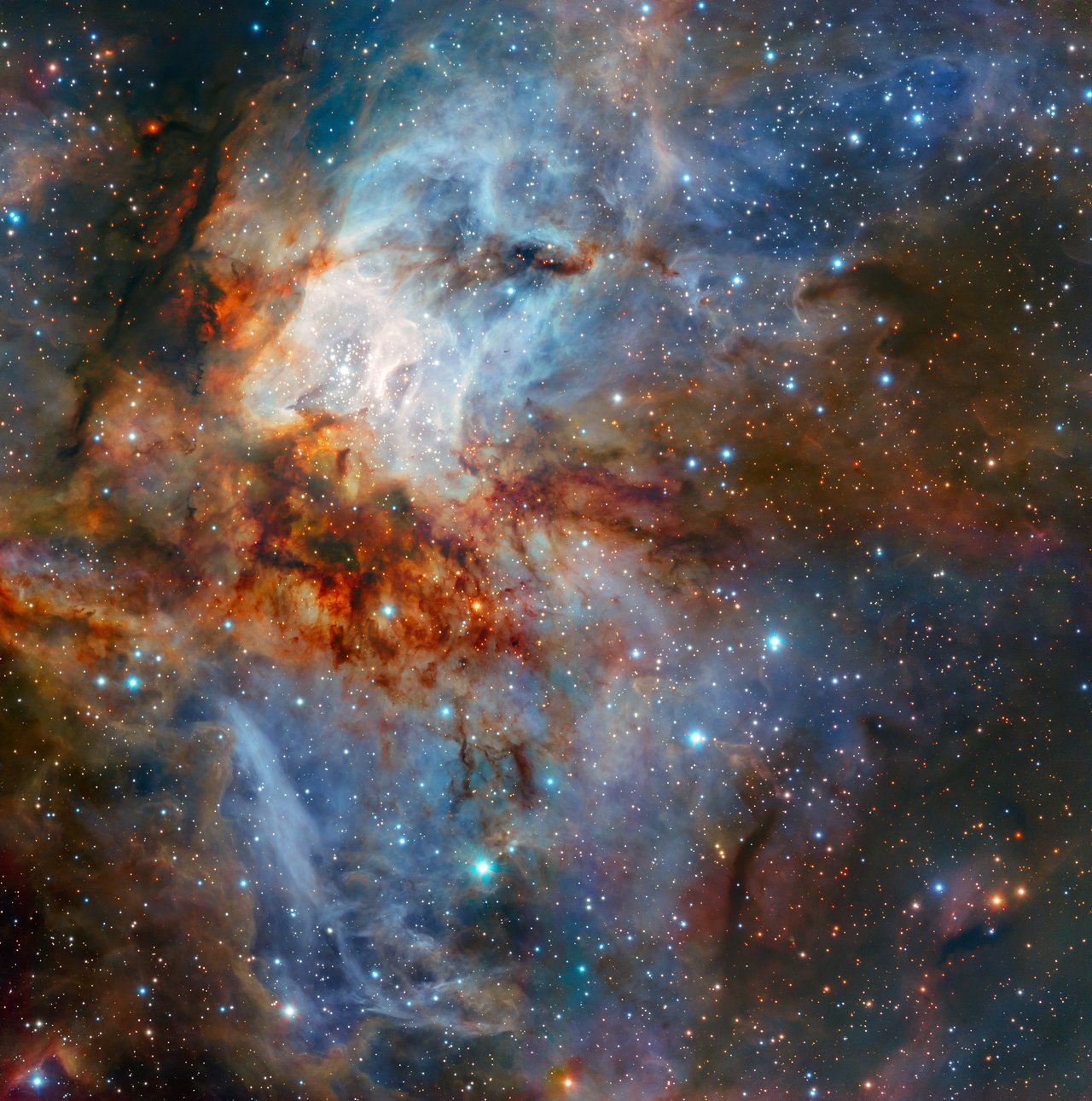Laser-Aided 'Hawk' Camera Snaps Spectacular New View of Star Cluster
You know an instrument is promising when even its test images are stunning. That's what this image of a nearby star cluster is, just one of a series of practice runs scientists took to make sure a new camera module on an incredibly powerful telescope was working properly.
The image comes courtesy of the GRAAL module, which helps a camera attached to the Very Large Telescope in Chile produce sharper images, according to a statement from the European Southern Observatory, which runs the telescope. In early January, a team spent a few evenings gathering data that would both test the camera's partnership with the module and give scientists a good look at a few particularly intriguing objects.
Those targets included this huge cluster of stars about 5,500 light-years away, known as RCW 38, which is an astronomical baby at less than a million years old. The result is a stunningly clear view of hundreds of young stars.

Scientists want to use the new image to study how stars are born, particularly the very small stars known as brown dwarfs, which previous research has suggested are common in RCW 38. Other images from the test nights were designed to crack the secrets of a dwarf planet and of supernovas caused by collapsing stellar cores. The images will also help scientists studying the mysteries of what they think is a binary active galactic nucleus.
The GRAAL module uses four laser beams as "reference stars," which helps the camera it's attached to reduce the fuzziness produced by the atmosphere. That camera, called HAWK-I, has a relatively large field of view, letting it capture huge swaths of sky in one image. And because HAWK-I gathers infrared light, its vision isn't foiled by the clouds of dust that swirl between the camera and its target.
In fact, it's the camera's response to dust clouds that helps make this image so beautiful — the billows of dark orange and red represent cooler patches of dust that clog up the areas between stars. The stars themselves, because they're still forming, are producing tons of radiation, making them appear blue in this image.
Get the Space.com Newsletter
Breaking space news, the latest updates on rocket launches, skywatching events and more!
Taken together, the two colors paint an incredible picture of one of the most intriguing regions of the sky.
Email Meghan Bartels at mbartels@space.com or follow her @meghanbartels. Follow us @Spacedotcom, Facebook and Google+. Original article on Space.com.
Join our Space Forums to keep talking space on the latest missions, night sky and more! And if you have a news tip, correction or comment, let us know at: community@space.com.

Meghan is a senior writer at Space.com and has more than five years' experience as a science journalist based in New York City. She joined Space.com in July 2018, with previous writing published in outlets including Newsweek and Audubon. Meghan earned an MA in science journalism from New York University and a BA in classics from Georgetown University, and in her free time she enjoys reading and visiting museums. Follow her on Twitter at @meghanbartels.









